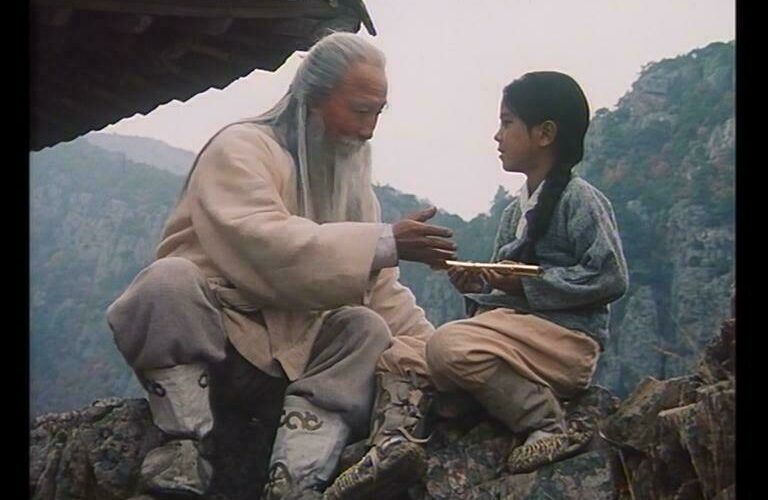In the history of North Korean cinema, there is one film whose effect on the audience far surpassed the expectations of its creators. This is Hong Gil-dong (1986), a cinematic version of the legendary folklore story about adventures of the Korean Robin Hood. The authorship of Tale of Hong Gil-dong is ascribed to Hô Gyun, a prominent Korean intellectual (1569-1618). Hong Gil-dong, the film based on this tale, can be called a debut for the distinguished North Korean scenario writer Kim Se Ryun. In previous North Korean cinematography, Kim had acquired popularity as a scenarist of light didactic comedies about the minor shortcomings of socialist Korea, such as Hello (Annyeong Haseo, 1979). Hong Gil-dong was the first movie of Kim Se Ryun’s, and was based on historical and folkloristic motifs, and the debut was a definite success. The film is dynamic, entertaining and contained minimal of propaganda messages, and all this has turned Hong Gil-dong into a symbol of the changes North Korean mass culture experienced in the 1980s.
Hong Gil-dong was among the North Korean works of cinematography which – after many long years of abandoning Korean traditional themes and focusing exclusively on the promotion of Kim Il Sung – resorted again to Korean folklore. Yet there was a significant difference in their approach to the classics, which North Korean intellectuals demonstrated in the 1980s and in the earlier period of North Korean culture.
In the history of North Korean cinema, there is one film whose effect on the audience far surpassed the expectations of its creators. This is Hong Gil-dong (1986), a cinematic version of the legendary folklore story about adventures of the Korean Robin Hood. The authorship of Tale of Hong Gil-dong is ascribed to Hô Gyun, a prominent Korean intellectual (1569-1618). Hong Gil-dong, the film based on this tale, can be called a debut for the distinguished North Korean scenario writer Kim Se Ryun. In previous North Korean cinematography, Kim had acquired popularity as a scenarist of light didactic comedies about the minor shortcomings of socialist Korea, such as Hello (Annyeong Haseo, 1979). Hong Gil-dong was the first movie of Kim Se Ryun’s, and was based on historical and folkloristic motifs, and the debut was a definite success. The film is dynamic, entertaining and contained minimal of propaganda messages, and all this has turned Hong Gil-dong into a symbol of the changes North Korean mass culture experienced in the 1980s.
Hong Gil-dong was among the North Korean works of cinematography which – after many long years of abandoning Korean traditional themes and focusing exclusively on the promotion of Kim Il Sung – resorted again to Korean folklore. Yet there was a significant difference in their approach to the classics, which North Korean intellectuals demonstrated in the 1980s and in the earlier period of North Korean culture.
Try unlimited access
Only $1 for four weeks
-
Unlimited access to all of NK News: reporting, investigations, analysis
-
Year-one discount if you continue past $1 trial period
-
The NK News Daily Update, an email newsletter to keep you in the loop
-
Searchable archive of all content, photo galleries, special columns
-
Contact NK News reporters with tips or requests for reporting
Get unlimited access to all NK News content, including original reporting, investigations, and analyses by our team of DPRK experts.
Subscribe
now
All major cards accepted. No commitments – you can cancel any time.










